
“Like all philodendrons, you have to be careful to not overwater it,” says Carter. “Only give it a drink when the soil is completely dry. When it comes to light, it likes it bright or medium and indirect.”
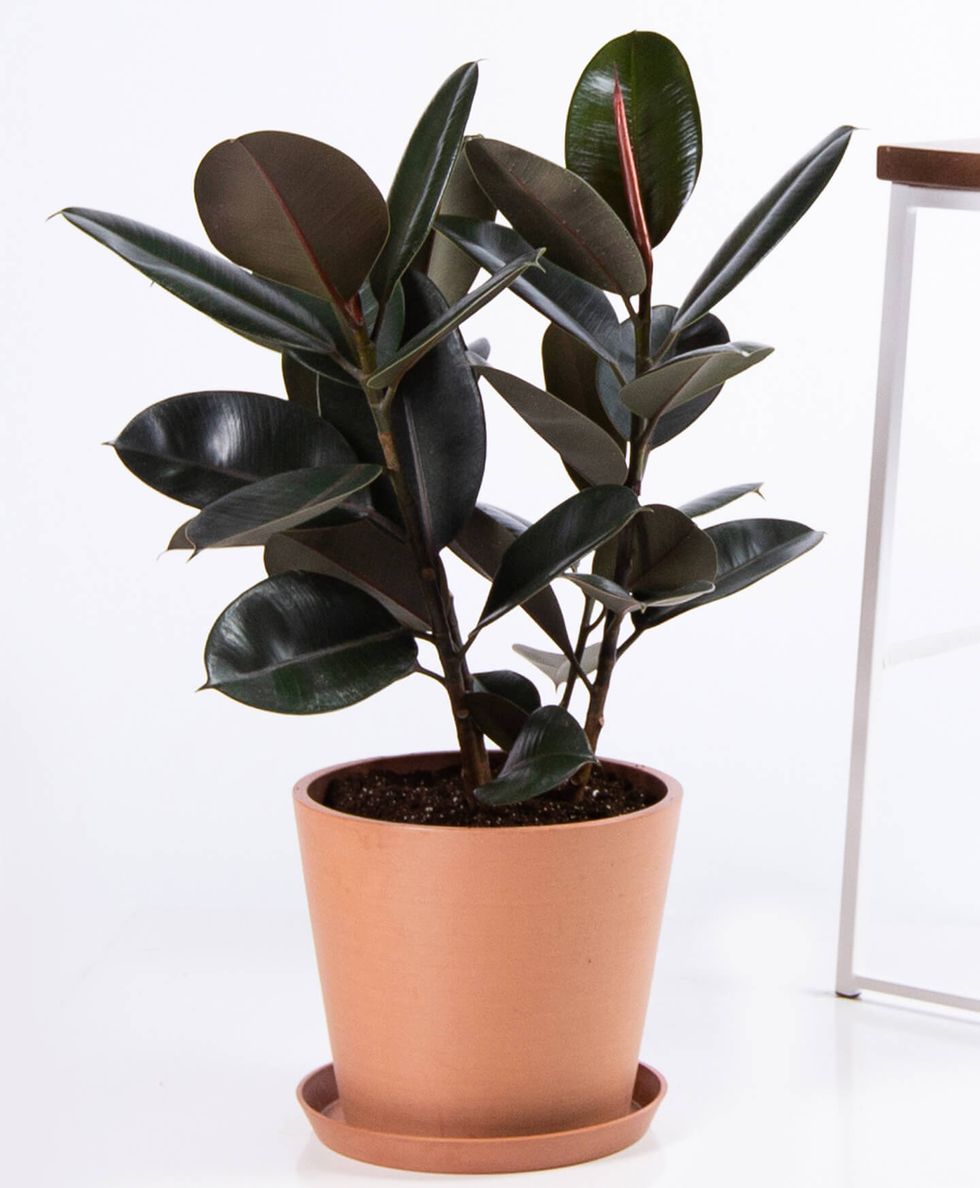
“This is one of my favorite ficus trees,” says Carter. “It’s less finicky than its popular cousin, the fiddle-leaf fig, and it can grow up to 25 feet indoors. When it comes to light, it does well when it’s bright and indirect. Keep the soil moist during the growing season, which is summer. In the winter, the soil needs less moisture.”

“This is a widely loved plant with many endearing nicknames like UFO plant, pancake plant, and Chinese money plant,” says Carter. “Its love of humidity makes it a great way to add color to a bathroom. The sprouted leafy discs could also work in any space with bright indirect light. Let the soil dry out between waterings to avoid root rot. Their leaves will droop a bit when they are thirsty.”

“This is one of my favorite succulents to grow indoors. Unlike other plants, it can survive a day of direct sunlight,” says Carter. “Place it in a pot with a drainage hole and water every two weeks only when the top two inches of soil are dry. To keep it looking fresh, just give dying or dry branches a snip.”
 5
5“Just like other variegated plants, the beauty exists in its tricolor foliage,” says Carter. “It will need its soil to stay evenly moist, so you’ll have to water it more frequently during spring and summer. Don’t ever let the soil completely dry out. It thrives in humidity, so a weekly misting session would be beneficial. Like most houseplants, it likes bright indirect light but can also tolerate low light.”

“This waxy-leafed beauty will do best in an area of your home that gets bright indirect light,” says Carter. “Direct sunlight will kill the plant over time. Only water it when the soil is dry, but do spray it with mist weekly because their leaves love humidity.”

“It’s easy to see where this got its name,” says Carter. “It thrives in bright indirect light but will also do well in filtered light. Be careful not to overexpose it to direct sun, because this can burn the leaves and dry the plant out. Keep the soil moist, not wet. For balanced growth, rotate it at least once a month.”

“Also known as the Crimson Prince, like other hoyas, this trailing beauty is perfect for displaying in a window that gets bright but indirect light,” says Carter. “They love humidity, so try misting it once a week and let the soil dry between waterings. Repot during the spring or summer when the roots start peeking out of the drainage hole.”
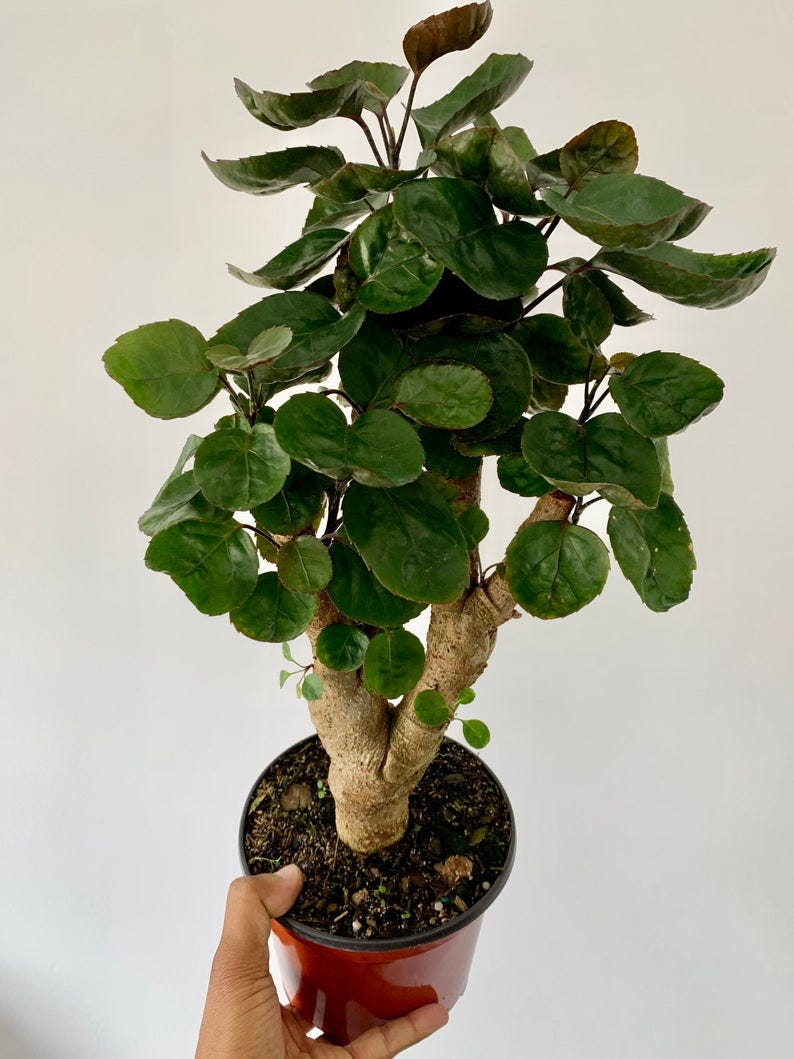
“The Aralia Fabian reminds me of something out of a Dr. Seuss book. Its beauty and weirdness comes from its thick burly trunk, thin speckled branches, and pancake-shaped foliage that’s a dark shade of green on top and a shade of violet on the bottom,” says Carter. “To care for it, place your plant in a pot that has a drainage hole and water it until water comes out in the base tray. Repeat only when the top two inches of soil become completely dry. It can live in a nice spot that has bright indirect light. If you don’t have that, a mix of dappled light throughout the day will also work well.”

“This is a statement plant,” says Carter. “The beautiful long green foliage makes it stand out from other ficus trees. Plus, it’s more durable and less prone to dropping its leaves. It needs plenty of indirect sunlight and will not survive in low light. Keep the soil consistently moist and only let the top inch dry before watering.”

You’ll be able to catch plenty of Zs if you invest in a ZZ plant—also known as the Zamioculcas zamiifolia—as it is one of the lowest-maintenance options on the market. It only needs to be watered three times a month, doesn’t require a lot of light, and will not attract bugs or other pests.
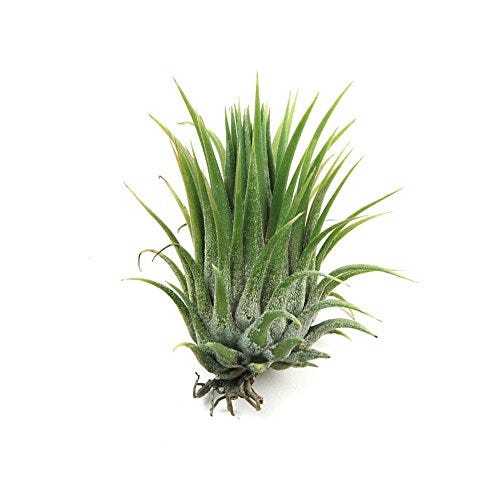
Air plants—also known as Tillandsia—sustain themselves on moisture from the air and require no soil (correct, zero soil) to grow. With a minimal root system and more than 500 species to choose from, there are a wonderful variety of visually interesting options, which can be displayed in stylish air-plant holders like these.

Even if you skip town for the weekend and forget to assign a friend plant-sitting duties, the spider plant will not punish you for neglecting it. The self-propagating, air-cleaning, petite, and pretty spider plant will grow in low to bright indirect light, making it a great option for apartment dwellers or first-time plant parents.

With its thick, Swiss cheese–like leaves and tropical feel, the Monstera deliciosa is a perfectly bold plant that can truly thrive in an apartment. They can tolerate many levels of sunlight and even grow under fluorescent lights. While you should water your Monstera regularly, it can survive a missed watering every now and then.

Striking red veins against soft, dark green leaves make the Red Prayer plant an aesthete’s dream, and its low upkeep makes it perfect for apartment dwellers. It should be kept in low to bright indirect sunlight, watered regularly, and misted once a week, but it can tolerate low light every now and then.
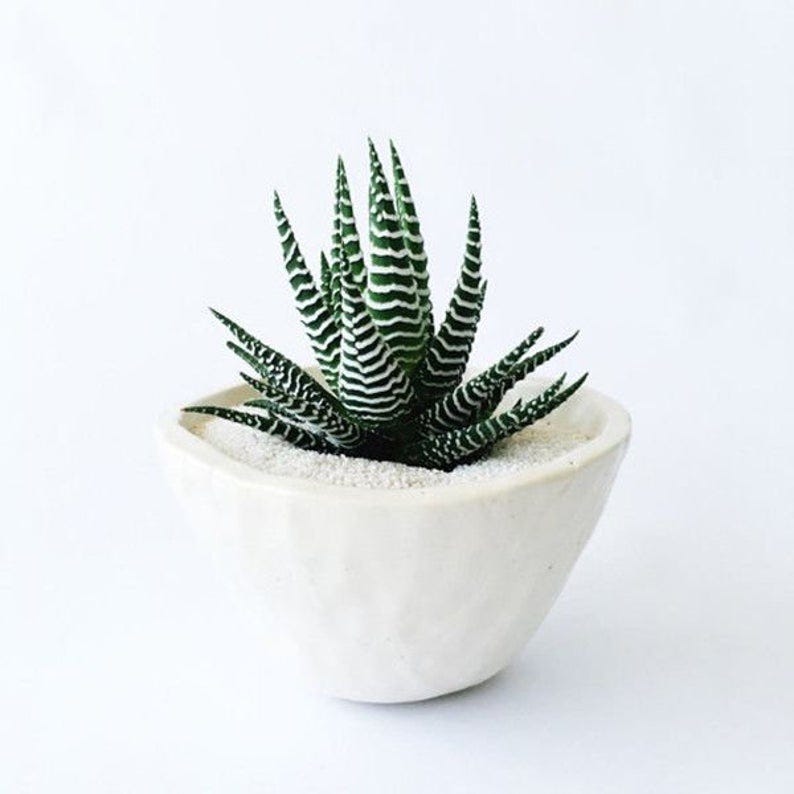
The Haworthia, or zebra plant, is one of the easiest succulents to grow. Maxing out at only eight inches tall, they require low light and minimal watering. Haworthia can be placed in both open spaces like a living room or small, contained spaces like a bathroom. Plus, their striped leaves are subtly striking—the perfect complement to any design style.

Perfect for bathrooms or confined spaces, the bird’s nest fern can be hung or potted, making it a versatile option that can move around your apartment at ease. The large leaves and glossy finish are similar to a standard fern, and it can thrive in a low-light space.
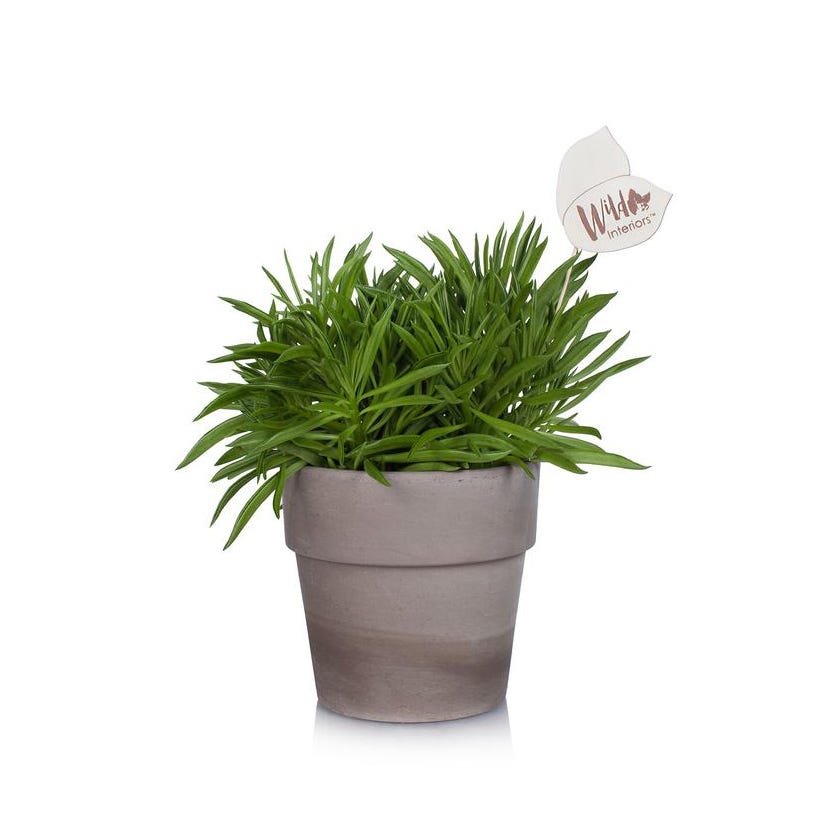
If the name isn’t enticing enough on its own, there are plenty of reasons to love the happy bean plant. For one, it boasts thick, succulent leaves that look just like green beans, and it only grows about 10 inches tall. Bright but not direct sunlight is recommended, and it only needs to be watered sparingly.

Bonsai is the Japanese art of pruning in which small trees mimic the scale and shape of a full-size tree. Bonsais are perfect for apartments because of their size, and the ficus bonsai is one of the lowest-maintenance ones. The ficus bonsai thrives in warm environments, so indoors is ideal. They require high sunlight and can survive occasional over- or underwatering.

The pothos plant can be hung from a basket or potted normally, and it will thrive in a wide variety of lighting conditions. It’s also known for its air-purification properties and can strip your home of toxins that can off-gas from furniture and rugs.

The cast-iron plant can survive in low light, in poor soil, and with minimal water, making it one of the most durable indoor plants. The deep green leaves also provide a stunning pop of color in your home.

The fiddle-leaf fig is great for apartments with high ceilings but minimal floor space. The plant is tall but not bushy and boasts waxy, dark green leaves. It requires medium light and only needs to be watered when the soil is dry to the touch.

Funky and unfussy, cacti are probably the poster plants for non-garden environments. They only require watering once a week while growing, and during cooler weather, you can get away with watering every few weeks to a month. Place it in a sunny area but keep out of direct sunlight, which can make the cactus look bleached or even orange. Cacti—like the prickly pear here— have an irresistibly unique aesthetic that blends with a range of apartment styles, from bohemian to modern.

This succulent is incredibly tough and can survive nearly any environment. The snake plant has tall, slender leaves that can tolerate low light (though it’ll thrive in medium or bright light). Water occasionally, allowing the soil to dry between waterings. The plant grows best in typical indoor temps—between 60 and 85 degrees Fahrenheit.

If you want to add greenery to the darker parts of your apartment, lucky bamboo is your ideal plant. It thrives in dim, indirect sunlight and can add a major sense Zen to your space— quite helpful for apartments in busy cities. Grow lucky bamboo in water, changing it every week.

It may be a weeping fig, but it could be a green vignette of joy in your apartment. These little trees can add the necessary amount of green we all need for a small space, and they only require watering every four to seven days. Place in a window that gets bright, indirect sunlight, turning the plant every once in a while to avoid excess growth on one side.

With indoor aloe vera, you’ll have instant medication on hand for scrapes and burns, plus a funky, spiky decor item for your kitchen or living room. Keep it near a window and water regularly, allowing the top two inches of soil to dry between waterings (which also means you can go on vacation and not come home to droopy aloe).

The paddle plant is a succulent with a unique shape and unfussy care requirements. Like other succulents, it grows best when exposed to bright light and even some direct light (the more it’s exposed to sun, the more its leaves will turn red). This plant does well in indoor environments, withstanding dry air even when you crank up the heat in your apartment during the winter months. Allow the top two inches of dirt to dry between waterings.

This is a staple interior plant that is great for apartment dwellers because it’ll tell you exactly what it wants. For example, is it turning yellow? That means it’s getting too much sunlight. Is it growing small leaves? That means it wants more fertilizer, so feed it a liquid houseplant fertilizer with macronutrients. For a happy plant, allow one inch of soil to dry (about the length from your index finger to your first knuckle) between waterings.

It may be an unconventional indoor plant, but a pot of lavender will add a pop of color and freshen your apartment far better (and far more naturally) than an air freshener. Lavender does best in bright light, so place it near a south-facing window that welcomes in plenty of sunshine. Smaller varieties are better for indoors, and they can be placed under a grow light if you don’t have ample sunshine in your apartment.

Add a tropical touch to your apartment with a verdant bird-of-paradise (Strelitzia nicolai) plant. These plants, native to South Africa and known for their showy flowers, can also thrive indoors, though they’re unlikely to bloom in those conditions. Be sure to give this one ample sunlight, keep the soil moist, and rotate it regularly to keep it growing straight.

This plant (also known as a flamingo or pigtail plant) is an Instagram fave, and it’s easy to see why, with its heart-shaped leaves, waxy, salmon-colored blooms, and sculptural spadix. This plant thrives in damp conditions, so consider placing it in a well-lit bathroom. Keep out of reach of kids, dogs, and cats, however—it is poisonous if ingested.

If you like the look of the pink anthurium above, a peace lily may also be right for you. Like the previous plant, the peace lily is relatively easy to care for and produces its signature sculptural blooms year-round. Just be sure to keep it out of direct sunlight and avoid overwatering. As with the pink anthurium, it’s toxic to children and pets if consumed, so do keep it out of reach.

This frondy plant is as fun as its name. But—contrary to its name—it is in fact a succulent, not a palm. Thankfully, that means it’s relatively low maintenance and prefers semidry conditions; be sure to let this one dry out between waterings every few weeks. It’s also safe for kids and pets.

The dieffenbachia, a classic houseplant to add to your indoor garden, features large, mottled leaves. Like so many plants, however, this one can fall victim to overwatering. But with well-draining soil and filtered light, it will be good to grow.